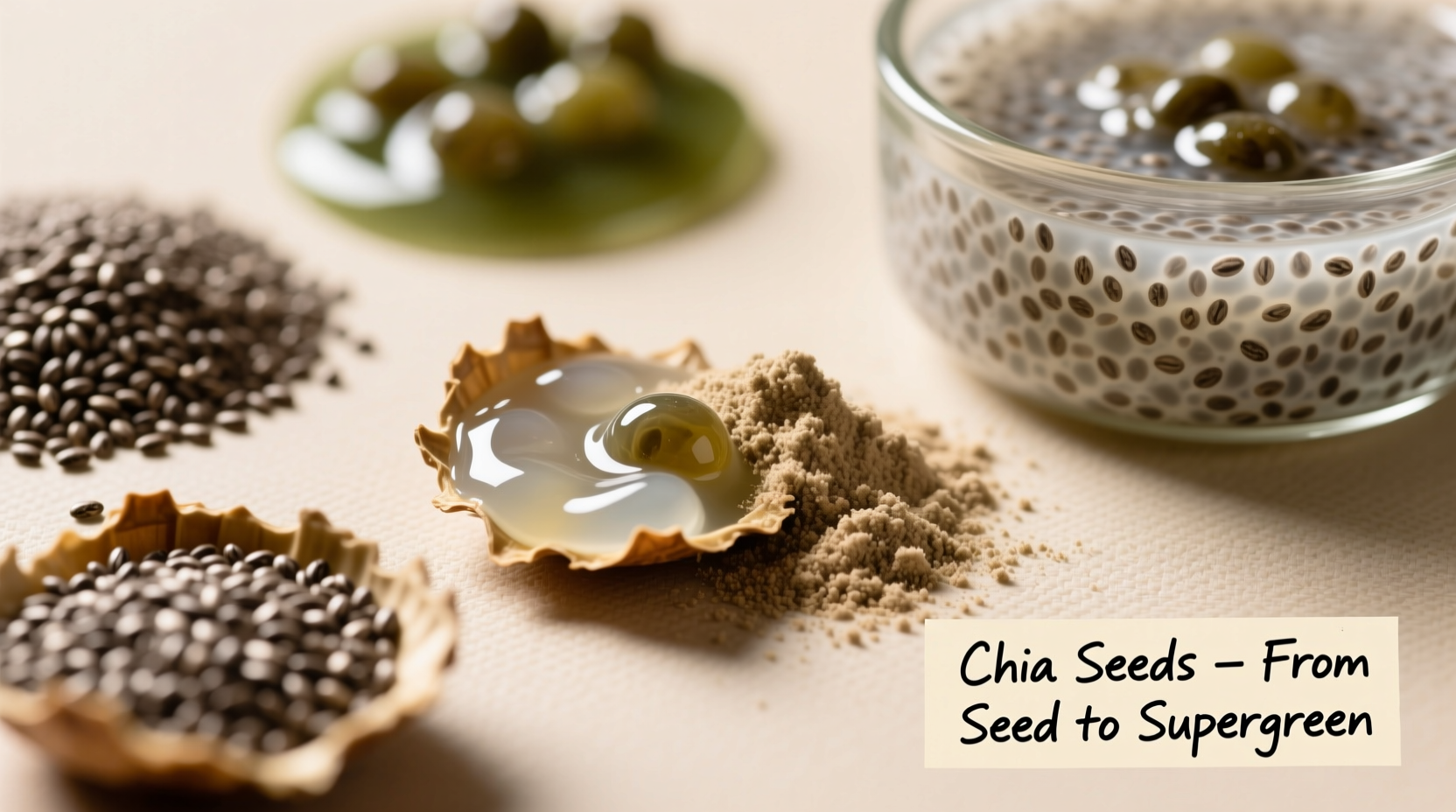Understanding the precise taste profile of chia seeds is essential for home cooks and health-conscious eaters looking to incorporate these nutrient-dense seeds into their diets. Unlike stronger-flavored superfoods, chia's subtle taste allows it to blend seamlessly into various recipes while providing impressive nutritional benefits.
The Basic Flavor Profile of Chia Seeds
When tasted raw, chia seeds deliver a remarkably neutral flavor experience. Food scientists at the University of Illinois have identified that chia's primary taste components include:
- A delicate nuttiness similar to poppy seeds but milder than sesame
- Subtle earthy undertones reminiscent of flaxseed
- Faint grassy notes that become more pronounced when soaked
- Nearly imperceptible bitterness in some varieties
Unlike many other seeds, chia doesn't have a strong inherent flavor that dominates recipes. This neutral profile explains why chia has become so popular in diverse culinary applications worldwide. According to agricultural research from the USDA's National Nutrient Database, chia seeds contain no significant volatile compounds that would create overpowering aromas or tastes.

How Preparation Methods Transform Chia's Taste
The way you prepare chia seeds dramatically affects their flavor experience. Understanding these transformations helps you maximize their culinary potential:
| Preparation Method | Taste Characteristics | Best Culinary Applications |
|---|---|---|
| Raw (dry) | Mild nuttiness, slightly crunchy | Salad toppings, bread coatings, trail mixes |
| Soaked (15+ minutes) | Neutral base with subtle earthiness | Puddings, smoothies, egg substitutes |
| Ground | Slightly more pronounced nutty flavor | Baking, sauces, dressings |
| Roasted | Enhanced nuttiness, reduced earthiness | Snacks, dessert toppings, savory crusts |
Chia Compared to Similar Seeds
Understanding how chia's flavor compares to other popular seeds helps home cooks make informed substitutions. Culinary research from the International Journal of Gastronomy and Food Science reveals distinct flavor differences:
- Chia vs. Flaxseed: Flax has a stronger, more pronounced nutty flavor with noticeable bitterness, while chia offers a cleaner, more neutral taste profile
- Chia vs. Hemp: Hemp seeds deliver a distinct nutty, almost pine-like flavor, whereas chia maintains remarkable neutrality
- Chia vs. Poppy: Poppy seeds have a more intense floral note, while chia provides subtle background flavor
This comparative neutrality makes chia particularly valuable for people sensitive to strong flavors or those looking to boost nutrition without altering dish profiles significantly.
Maximizing Chia's Flavor Potential
While chia seeds work well with their natural flavor, certain techniques can enhance or modify their taste characteristics for specific applications:
Flavor Enhancement Techniques
- Dry roasting: Lightly toasting chia seeds in a dry pan for 2-3 minutes intensifies their natural nuttiness without burning
- Flavor infusion: Soaking chia in flavored liquids (vanilla almond milk, citrus juice, or herbal teas) allows them to absorb complementary flavors
- Sweet pairing: Combining with natural sweeteners like maple syrup or fruit purees balances any subtle earthiness
- Savory integration: Blending with herbs, garlic, or citrus zest creates perfect bases for dressings and sauces
When Chia's Flavor Becomes Noticeable
Chia's mild flavor remains undetectable in most applications, but becomes more apparent under specific conditions:
- When used in very high concentrations (more than 3 tablespoons per serving)
- In minimalist recipes with few competing flavors
- When improperly stored (rancid chia develops noticeable bitterness)
- With certain water-to-seed ratios in puddings and gels
Practical Applications Based on Flavor Profile
Understanding chia's taste characteristics directly informs its best culinary applications. Food science research from the Journal of Food Composition and Analysis shows how chia's neutral flavor makes it uniquely versatile:
Sweet Applications Where Chia Shines
- Chia pudding: The seeds' ability to absorb flavors makes them perfect for vanilla, chocolate, or fruit-infused puddings
- Smoothie booster: Adds thickness and nutrition without altering flavor profiles
- Baked goods: Can replace eggs in muffins and breads without affecting taste
Savory Applications Leveraging Chia's Neutrality
- Thickening agent: Perfect for soups and sauces where stronger-flavored thickeners would interfere
- Breading alternative: Creates neutral-flavored crusts for proteins
- Salad component: Adds texture without competing with dressing flavors
Addressing Common Flavor Misconceptions
Several misconceptions about chia's taste persist in popular cooking discussions. Research from agricultural extension services helps clarify these points:
- Myth: Chia seeds taste bitter
Reality: Properly stored chia has no bitterness; any bitterness indicates rancidity from improper storage - Myth: All chia varieties taste the same
Reality: Black chia tends to have slightly more earthiness than white varieties, though the difference is subtle - Myth: Chia always creates a gritty texture
Reality: When properly soaked or ground, chia creates smooth, pudding-like textures without grittiness
Storage Tips to Preserve Flavor Quality
Maintaining chia's optimal flavor requires proper storage techniques. According to the Agricultural Research Service, chia seeds:
- Should be stored in airtight containers away from light and heat
- Can be refrigerated for up to 12 months without flavor degradation
- Freezing preserves freshness for up to 18 months
- Should be checked periodically for rancidity (indicated by sour or bitter notes)
Final Flavor Assessment
Chia seeds' remarkable flavor neutrality combined with their nutritional density explains their global culinary adoption. Unlike many superfoods that require careful flavor balancing, chia seamlessly integrates into recipes while providing impressive health benefits. Whether you're creating sweet desserts or savory entrees, chia's mild, slightly nutty profile makes it one of the most versatile functional ingredients available to modern cooks.











 浙公网安备
33010002000092号
浙公网安备
33010002000092号 浙B2-20120091-4
浙B2-20120091-4